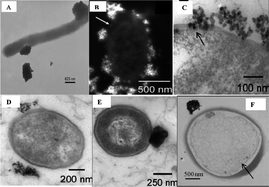Nanotechnology is currently at the forefront of scientific research and technological developments that have resulted in the manufacture of novel consumer products and numerous industrial applications using engineered nanomaterials (ENMs). With the increasing number of applications and uses of ENMs comes an increasing likelihood of nanoscale materials posing potential risks to the environment and engineered technical systems such as wastewater treatment plants (WWTPs). Recent scientific data suggests that ENMs that are useful in, for example, medical applications due to their novel physicochemical properties, may also cause adverse effects to the bacterial populations used in wastewater treatment systems. In this review, the toxicological effects of titanium nanoparticles (nTiO2), zinc oxide (nZnO), carbon nanotubes (CNTs), fullerenes (C60) and silver nanoparticles (AgNPs) to bacteria were examined. The results suggest that the potential ENMs risks to bacteria are non-uniform (need to be assessed case-by-case), and are dependent on numerous factors (e.g. size, pH, surface area, natural organic matter). Currently available data are therefore insufficient for evaluating the risks that ENMs pose in WWTPs. To fill these knowledge gaps, we recommend scenario specific studies aimed at improving our understanding on: (i) estimated volumes of ENMs in effluents, (ii) the antibacterial sensitivity of cultures within WWTPs towards selected ENMs, and (iii) processes improving the stability of ENMs in solutions. Two factors that merit consideration for elucidating the potential risks systematically are the toxicity mechanisms of ENMs to bacteria, and the influencing factors based on inherent physicochemical properties and environmental factors. Furthermore, the complexity of behaviour and fate of ENMs in real WWTPs requires case studies for assessing the ENMs risks to bacteria in vivo. The current laboratory results derived using simplified exposure media do not reflect actual environmental conditions.


 Please wait while we load your content...
Please wait while we load your content...